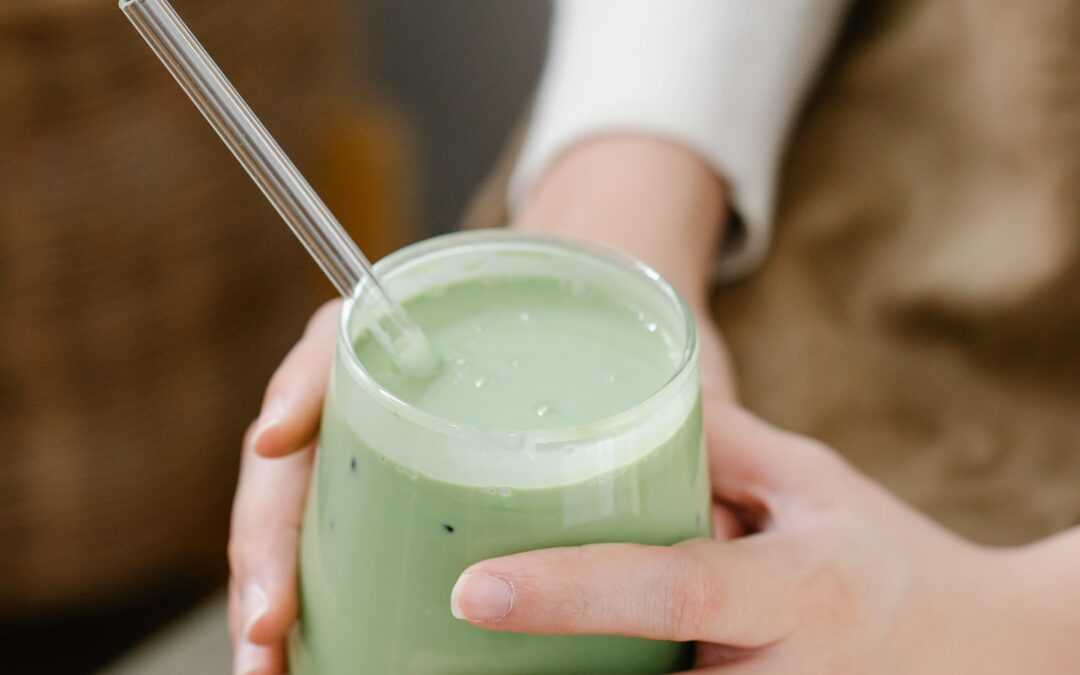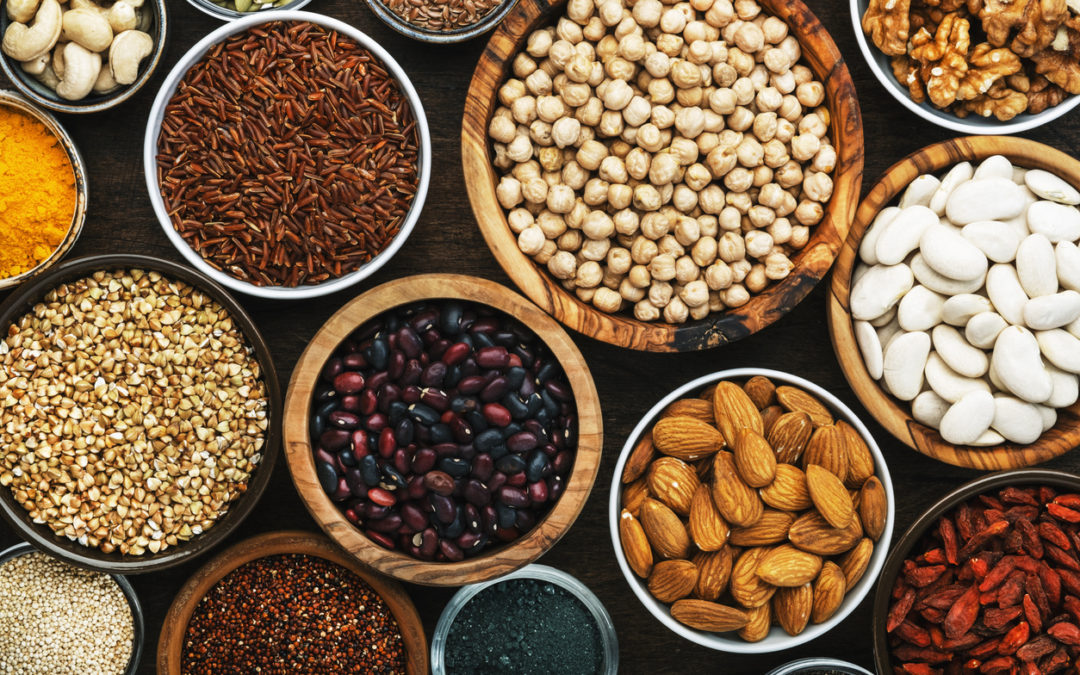
by Jen Owen, N.P. | Oct 6, 2022 | Integrative Medicine
Shared by Jen Owen, N.P., the Flourish Nurse Practitioner
This past week, I was treating a teen for some possible nutrient deficiencies. I was looking in Rosemary Gladstar’s book, “Herbal Healing for Women”, and I was reminded of her wonderful nutrient suggestions for teenagers. Rosemary is my first and favorite herbal teacher, so I deeply trust her suggestions.
Rosemary was feeling frustrated because her teenage daughters were skipping breakfast every day. The smoothie below was the compromise she made with them, and she felt good sending them off every day with a shake full of protein and calcium.
The others are ideas for teens who might need some extra boosts.
I wanted to share them with you today, because I thought many of you might be wanting to boost up your teens. And, of course, these things are great for other aged humans as well.
High Calcium Protein Shake
1 cup milk of choice
1 cup nonsweetened juice (experiment with different flavors)
1-2 bananas ( freeze ripe bananas for a thicker, creamier shake)
1/4 cup frozen strawberries (or any fresh fruit when it’s in season)
1/4 cup yogurt
1 teaspoon bee pollen
1 scoop protein powder (dose per product instructions)
2 teaspoons spirulina
1/2 teaspoon pure vanilla extract
Rosemary says, “There are infinite varieties to this basic shake. Sometimes I add frozen orange juice for an Orange Julius—like shake. Sometimes I use juice in place of milk. I’ve found a dash of pure vanilla extract always enhances the flavor of the shake.”
Spirulina
A simple blue-green algae, spirulina has been used for thousands of years as a high-power food source. Some 60-70 percent protein by weight, it is considered the highest source of digestive plant protein and is second only to dried whole eggs when compared with animal forms of protein. It is also a remarkable source of vitamin A, calcium, the B vitamins, and chlorophyll. Convincing people to try this green algae in powder form is often an ordeal, though it’s easily camouflaged (except for the unmistakable dark green color) when blended into fruit and vegetable juice. Spirulina is also sold in easy-to-take tablet form. The general dose is two tablespoons of powdered spirulina, or six tablets daily. Your teenager may find the capsules much more appealing than the powdered form.
Bee Pollen
Another of the bee’s little gifts, bee pollen is a concentrated source of nearly all known nutrients. It is a complete protein, containing all twenty-two amino acids, and it has high levels of the twenty-seven different minerals, enzymes, and coenzymes, including vitamin B1, B2, and B6, pantothenic acid, folic acid, vitamin C, and the fat soluble vitamins A and E. Rosemary finds the pollen delicious, but not every teenager does. It is easy to camouflage it by mixing it in blender drinks or stirring into cereal. The suggested dosage is about one-fourth teaspoon daily. Because there is a small percentage of people who are allergic to bee pollen, it is best to test your teenager’s sensitivity to it by having them take just a small dose to begin with and then increase it with time. If they suffer from allergies, you may wish to consult an allergist before they take the bee pollen.
Seaweed
Seaweed is an excellent food source and supplement to the diet, especially for teenagers suffering hormonal imbalance. Seaweeds provide concentrated trace minerals and are a marvellous source of the natural biochelated iodine so necessary to the function of the thyroid gland. Most seaweed provides the building blocks needed by the endocrine glands to manufacture necessary hormones. Seaweed is also generally high in calcium (one tablespoon of hizike provides more digestible calcium than an eight-ounce glass of cow milk). Seaweed can be incorporated into many foods or the capsules can be worked into a daily health program. The dosage varies, depending on the type of seaweed. Kelp is the most common seaweed available and easily found in capsulated form. However, kelp is also the “fishiest” and strongest-tasting of the seaweeds. Many of the other, lesser-known seaweed are very mild and pleasant tasting. All are easily found in natural food stores, gourmet shops, and grocery stores specializing in Asian foods. When taking seaweed in capsules, a dosage of ten to twelve capsules a day is generally suggested. Though this may seem like a lot of capsules, remember that eating seaweed the way is like eating salad in capsules. You would have to ingest a lot of those capsules to get all your greens!
Liquid Floradix Iron or NatureWorks Herbal Iron
Floradix is a liquid vitamin mineral formula made from organic herbs and vegetable gathered in the high mountains of Europe. It is available in natural food stores throughout the country. Rosemary has recommended it for years because it is such a highly concentrated and effective formula and is readily available. It is also pleasant-tasting, so people find it enjoyable to take. Liquid Floradix with Iron is an excellent source of digestible vitamins and minerals and biochelated iron. It helps stabilize energy and mood swings, and regulates the menstrual cycle. NatureWorks Herbal Iron is another liquid vitamin/mineral formula frequently found in natural food and herb stores. It is quite tasty and comparable to Floradix in quality.
If you’d like to learn more from Rosemary, check out her many books.
If your teen requires more support, I would be happy to see them in my clinic. ~Jen Owen, N.P.

by Jen Owen, N.P. | Jun 2, 2022 | Integrative Medicine
In integrative medicine, we consider the gut to be the root of all health. When there’s imbalance in the gut, a myriad of symptoms can occur.
Most people think of the gut for obvious gut-related symptoms such as diarrhea, constipation, bloating, heartburn, etc.
Most don’t think of the gut for more systemic issues such as rashes and other skin disorders, joint pain, headaches, trouble concentrating, depression, fatigue, and more.
Often, the gut IS the root cause of all of the above symptoms and even more chronic diseases such as diabetes, fatty liver disease, and autoimmune disorders.
If you have any symptoms that typical western treatments haven’t been able to erradicate, then you might just have a leaky gut.
What is leaky gut?
A more technical term for leaky gut is intestinal permeability.
In a normal functioning small intestine, there are tight junctions between all of the cells along the lining. These junctions hold the cells together and keep everything in the gut that is supposed to stay in the gut.
When this lining gets damaged, it thins causing microscopic substances to cross the intestinal lining into the blood stream. This causes a response from the immune system and a cascade of events that cause many different symptoms.
What causes leaky gut?
Leaky gut is caused by anything that can cause an insult to the gut lining. The most common things that do this include:
- Non-steroidal anti-inflammatory drugs, such as ibuprofen and naproxen (NSAIDs)
- Poor diet
- Poor digestion
- Alcohol intake
- Infections
- Imbalance of good/bad bacteria
- Antibiotics and other drugs
- Toxins
How is leaky gut diagnosed?
If you have gut issues or any other chronic symptoms, it’s safe to assume you have a leaky gut.
In my clinic, I like to use the GI Effects Comprehensive Stool Analysis to diagnosis leaky gut and other underlying gastrointestinal concerns.
This testing uses biomarkers to determine the overall health of the gut, including digestion/absorption, inflammation/immunology, and the health of the gut microbiome (aka do you have the right balance of good/bad bacteria).
When there is a leaky gut, we can use these biomarkers to understand whether or not you have a leaky gut.
How is leaky gut treated?
The main goal of treating leaky gut is to tighten the cell junctions along the gut.
In order to do that, we follow these steps:
- Remove the invading causes.
- Treat any infections, such as bacteria, yeast, and parasites (will be revealed on the stool testing).
- Use herbs and other supplements to heal the gut lining.
- Replenish the good bacteria.
Healing leaky gut isn’t complicated and often doesn’t take more than 6-12 months to diminish many symptoms.
It does take dedicated effort and often expert support.
To learn more, come on in to The Flourish Center this coming Tuesday, June 7 from 6:15-7pm for a free community presentation.
And, if you know you want testing and support, schedule an appointment with me, Jen Owen, N.P. now.
Please share this post widely because likely your friends and family are dealing with this, too.

by Jen Owen, N.P. | May 5, 2022 | Food Medicine, Integrative Medicine
Insulin resistance is what I call the “pre pre-diabetes” because it’s actually happening in the body before your blood glucose is ever abnormal and you get the diagnosis of pre-diabetes.
Watch the video now or read on….
#1: What are the symptoms?
Some people don’t have any symptoms at all when they have insulin resistance, but most people feel really tired. They feel like they are dragging around, so they go in to see their medical provider. Blood tests otfen show that “nothing is wrong with them”.
Some people have weight gain, especially around the abdomen. Many “crash” after they eat certain foods and they don’t understand why.
For some people insulin resistance affects their mood. It can cause a low level of depression or that feeling of feeling very “hangry”.
#2: What actually is Insulin Resistance?
I could go into a deep physiology lesson about this. The basic thing I want you to know is that insulin is what lets your blood sugar (your glucose) into your cells to give them the energy to do what they need to do. When you have insulin resistance the blood sugar is not getting in, and so your cells don’t have that fuel that they need.
#3: How do you fix it?
I recommend getting your insulin levels checked—it’s part of the routine labs I do here at my clinic in Portland. If you do get it checked, you want to make sure your insulin level is under 5. Slightly over 5 is going to be mild insulin resistance, and the higher it goes, the more insulin resistance you have—meaning the less glucose is getting into your cells
The most important thing you can do to help this process is eating protein. You want to eat protein every few hours throughout the day, eat a high protein breakfast, and always have protein at your meals and with any carbs that you eat.
By doing that, you’re going to stabilize your blood sugar level in your blood and you’re going to reduce that insulin resistance for those cells.
That’s it! It’s actually simple.
Why we’re not checking it in the regular, conventional blood testing, I’m not sure, since insulin resistance is happening in your body well before your blood glucose levels are ever elevagted. We would be heading off a lot of pre-diabetes if people knew about this ahead of time. It would also be saving you hours and hours of being tired and not feeling like yourself because this is happening in your body.
If you’re in Portland, I’d love to see you at my clinic—we can work through this. And if not I hope you’ll see your own provider and have this checked! Or just make sure you’re eating protein throughout the day and with meals to keep that blood sugar stabilized and reduce your risk of insulin resistance, reducing your risk of pre-diabetes and diabetes down the road.

by Jen Owen, N.P. | Oct 8, 2021 | Integrative Medicine
I asked for suggestions for blog posts and found that many people would like ideas on how to beat insomnia (trouble sleeping). Insomnia can mean different things to different people. Some people have trouble falling asleep, some have trouble staying asleep, and some have both.
Insomnia can be caused by many factors and anyone who has followed me or seen me as a patient will know that I strongly believe in finding the root of the problem. It can be caused by stress, hormonal changes, adrenal imbalances, thyroid issues, food sensitivities, alcohol overindulgence, certain medications and more. If these simple tips don’t help you sleep, then you really need to see a practitioner who can help you get to the bottom of your sleep struggles.
Practical Sleep Tips
First, let’s look at some practical tips for insomnia.
~Avoid caffeine later in the day.
~Establish a regular routine of going to bed at night and rising in the morning. Many people sleep better if they are asleep before 10pm.
~Use a white noise machine or fan to block out noise.
~Make your room as dark as possible. Even a small amount of light, like from an alarm clock can confuse your system to thinking it is daytime.
~Don’t eat large meals late in the day and limit fluids after 8pm if you are getting up to urinate during the night and cannot get back to sleep.
~Add meditation to your life to help with stress.
Supplements for Insomnia
If you’ve tried all of those things and nothing helped, you can try some over-the-counter herbs and supplements for insomnia. My two favorite supplements to help you sleep are melatonin and magnesium.
Melatonin helps to reset your circadian rhythm, which affects your sleep/wake cycles. Melatonin resets your internal clock to tell your body when to sleep and when to wake. A dose of 2-3mg for a few weeks will often do the trick. For long-term use, I recommend a dose of 1mg or less.
Magnesium deficiency can cause excitability in the muscles and the brain. It plays important roles in the contraction and relaxation of muscles and less understood roles in the nervous system. I’ve found magnesium to be very beneficial for many people with insomnia, especially those who can’t sleep due to aches and pains or restless legs. It also seems to have a calming effect on the brain, allowing for more restful sleep. The dose of magnesium depends on the type you are taking. Check out this blog for more information on insomnia.
Herbs for Insomnia
As usual, herbs are my favorite remedies for insomnia. Herbs for sleep are gentle and work very effectively. Valerian is an old favorite for insomnia and is a non-addictive. The root is the part used for medicine and can be taken as extract, capsules, or tea, if you are brave. Valerian smells a bit like dirty old socks. Some people, including yours truly, are stimulated by Valerian, but this does not seem to be true for most people.
Skullcap is one of my personal favorites for insomnia, as well as mild anxiety. It doesn’t have a sedating effect, but works to strengthen the entire central nervous system. When the nervous system is strong, there’s much less nervous stress, thus inducing more restorative and peaceful sleep.
Chamomile is another great herb for insomnia and most people really enjoy the taste as a tea. Chamomile helps to calm the nerves and relieve tension. It also has anti-inflammatory effects, so can relieve mild aches and pains and digestive disturbances.
Good quality sleep is so important. We cannot be the best we can be if we are not restoring all of our systems each evening. We should all be getting 7-8 hours of sleep each night and a little more when we can. If you are not sleeping well, give these suggestions a try. I have a few other tricks up my sleeve, as well if they do not work and you would like to schedule a consultation.
Like what you are reading here and want more? Sign-up for my weekly newsletter on the bottom of this page and I will send weekly health and wellness information right to your inbox. Please share this post with your family and friends who may benefit from the information.
Wishing you blissful beauty sleep!

by Jen Owen, N.P. | Aug 27, 2021 | Integrative Medicine, Mind-Body Medicine, Seasonal Health
For years, I’ve been checking hormone panels for females experiencing many different hormonal symptoms. Overall, the most common pattern I’ve seen is referred to as estrogen dominance. The estrogen level is normal while the progesterone level is low. This creates symptoms such as bloating, breast tenderness, low sex drive, headaches, irregular periods, decreased sex drive, mood swings, fatigue, trouble sleeping, weight gain around the abdomen and hips, foggy thinking & memory loss, and PMS.
This pattern often occurs when the person is experiencing a higher-than-normal stress level. Because progesterone naturally provides some of our cortisol (stress-managing hormone), during times of increased stress, the body will “steal” progesterone to make more cortisol.
I’m very used to seeing this and treating this.
What I’m not used to seeing is a pattern that has become quite prevalent over the past 1.5 years during the pandemic and other issues of these times.
In almost every hormone panel I’ve checked, another hormone is elevated: DHEA.
DHEA is short for dehydroepiandrosterone (D-hi-dro-epp-E-an-dro-ster-own), a hormone made by the adrenal glands located just above the kidneys. Of the more than 150 hormones made by the adrenal glands, the most abundant is DHEA. DHEA is generally converted into testosterone and estrogens.
Most of the time, when I check this hormone, it’s low. I’ve supplemented it many times in females to increase low testosterone and low estrogen.
Because DHEA is also produced from the ovaries, in the past I would see elevated DHEA associated with abnormal hair growth (think beard), acne, and PCOS.
Not now.
DHEA is appearing high across the board and not just a little high, it’s often double or triple the level it should be, without any of the usual and expected symptoms.
Now, this is not all bad news. Some studies suggest that DHEA may elevated as a counterbalance to elevated cortisol, so it’s likely a healthy adaptive response by the body.
At the same time, it means that the body is overloaded with stress hormones, and it’s working diligently to manage this and bring the body back to balance.
I’ve talked a lot about managing stress since COVID began. If you missed my previous posts, see the bottom of this page.
During the first year of the pandemic, I gave everyone a pass. I appreciate personally how hard it’s been to adapt to all of it; how challenging it’s been to eat right, find new ways to exercise, and avoid getting into negative habits to help manage our stress.
Now, we must face the reality that not much is likely to change anytime soon. We have to find ways to adapt, to manage our stress so that our bodies don’t take the toll from all of this.
We have to find new ways to experience joy, appreciation, love, and freedom.
When people come to see me, I can feel how much they want a quick fix to what they’re feeling. It’s frustrating to hear that stress is the underlying cause of their symptoms.
Yet, here we are and it’s been true for almost everyone I’ve seen.
The good news is that my stress-management toolkit is deep and when my patients implement the plans we develop together, they feel better.
Start with one thing…what’s the one thing that you could change in your life right now, that if you changed it, it would make a really big difference? Do that first and let it be for a few weeks. Then, work with the next thing. Trying to make a bunch of changes all at once simply creates more stress and likely, more DHEA.
If you’d like my help, schedule an appointment here.
Check out these articles to understand the stress response more fully and for more ideas of how to manage it:
Are You in Fight-or-Flight or Rest-and-Digest?
Self-Care for Stressed Times
Health Basics Check-in
Stop and Breathe…
How to Handle the Strain and Drain
My Top 5 Herb Choices for Stress
Exercise Can Be Fun
5 Tips to Protect Your Energy

by Jen Owen, N.P. | Apr 2, 2021 | Integrative Medicine
Written by our Integrative Medicine Nurse Practitioner, Jen Owen
Every year at springtime, I’m asked a lot of questions about detoxing. I, myself, have tried just about everything there is for cleansing the body: complete fasting, juice fasting, supplement regimens, cleanses, etc.
The main thing I’ve learned from all of this and from working with people who have tried the same, is that 99% of the time, the body will detox itself, if you allow it to. One of the main ways our bodies detox is from a powerful antioxidant called glutathione.
Glutathione is constantly being produced and can be found in almost every cell in a healthy individual.The highest levels are found in the liver, making it very important in detoxification. Levels of production are reduced by pollution, stress, foods that cause inflammation, toxins, medications, radiation, aging, etc.
Glutathione acts very similarly to a sticky bug tape, going through the blood stream and sticking to toxins, viruses, and even heavy metals. It is normally recycled and reused. When the toxic load becomes too great, glutathione production and recycling decreases.
When we can no longer detox properly, we become sick. Low glutathione levels have been found in chronic infections, chronic fatigue syndrome, cancer, autoimmune disease, heart disease, diabetes, Alzheimer’s disease, asthma, Parkinson’s disease, liver disease, kidney issues, and much more. Glutathione is very important for the proper functioning of the immune system and for keeping every cell in the body healthy.
Tthere are many ways you can change your way of living to positively affect this detox process. One of the most obvious and most often ignored ways is exercise. Exercise increases your glutathione levels, which will increase your detoxification and immune system actions. Be sure you are getting cardiovascular exercise, such as fast walking, jogging, aerobics. Start with 5-10 minutes per day and work up to 30 minutes daily for optimal health.
The next obvious, but often ignored way to increase your glutathione levels, is eating supportive foods and the rainbow diet. Processed foods, fast foods, factory-farmed meat and dairy often contain preservatives and other chemicals that increase the burden on the detoxifying mechanisms in our bodies.
This leads to more work and eventually less glutathione production. Sulfur-containing foods, such as onions, garlic, and cruciferous vegetables (broccoli, kale, cauliflower, cabbage, collards, etc.) actually increase your glutathione production, so be sure to eat some of these every day, if they you tolerate them well.
The other way to increase glutathione levels is by using supplements. There are several that can be added, including liposomal glutathione, N-acetyl cysteine, selenium, vitamins B6, B12, C, and E, alpha lipoic acid, and more. I usually wait to add supplements until I am sure the person is exercising and eating the rainbow. The only way to fix problems for good is to fix the reasons they got there in the first place, which is often from eating less ideal foods and lack of exercise.
I think we can all agree on that, right?
So, if you are thinking of trying one of the oh-so-popular detoxes or cleanses out there for “spring cleaning”, first examine your day-to-day habits.
Are you eating the most optimal foods possible for your body?
Are you getting your blood pumping on a daily basis?
If not, save your money and start there!
You’ll be amazed at how much better you feel, how much better you sleep, and how much your life will improve when you care for yourself daily through excellent food and movement!
What are your thoughts about all of this? I would love to hear from you in the comment section below and please share this article with your friends!
And if you need extra help, I’m here for you. Schedule an appointment with me here.







Recent Comments